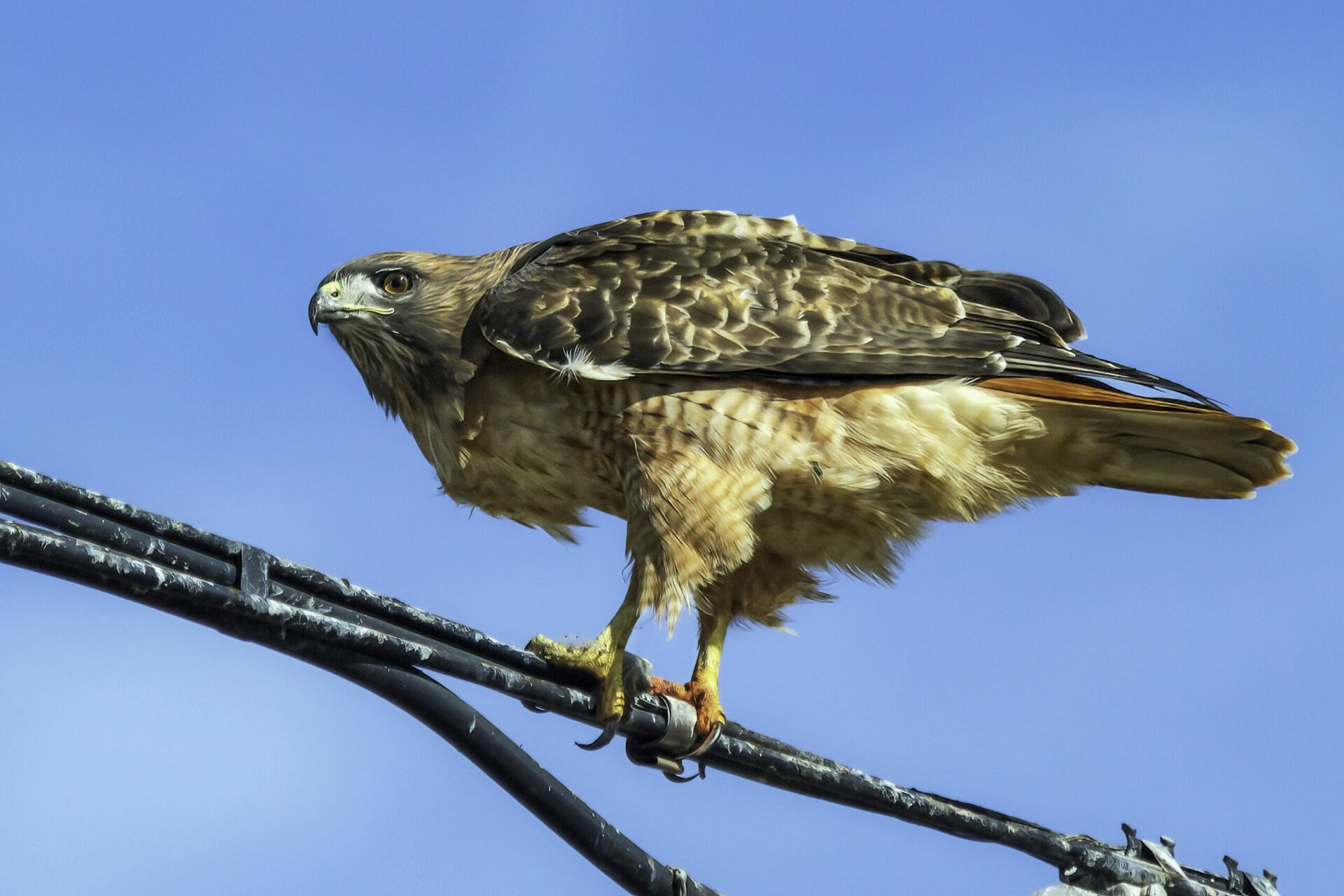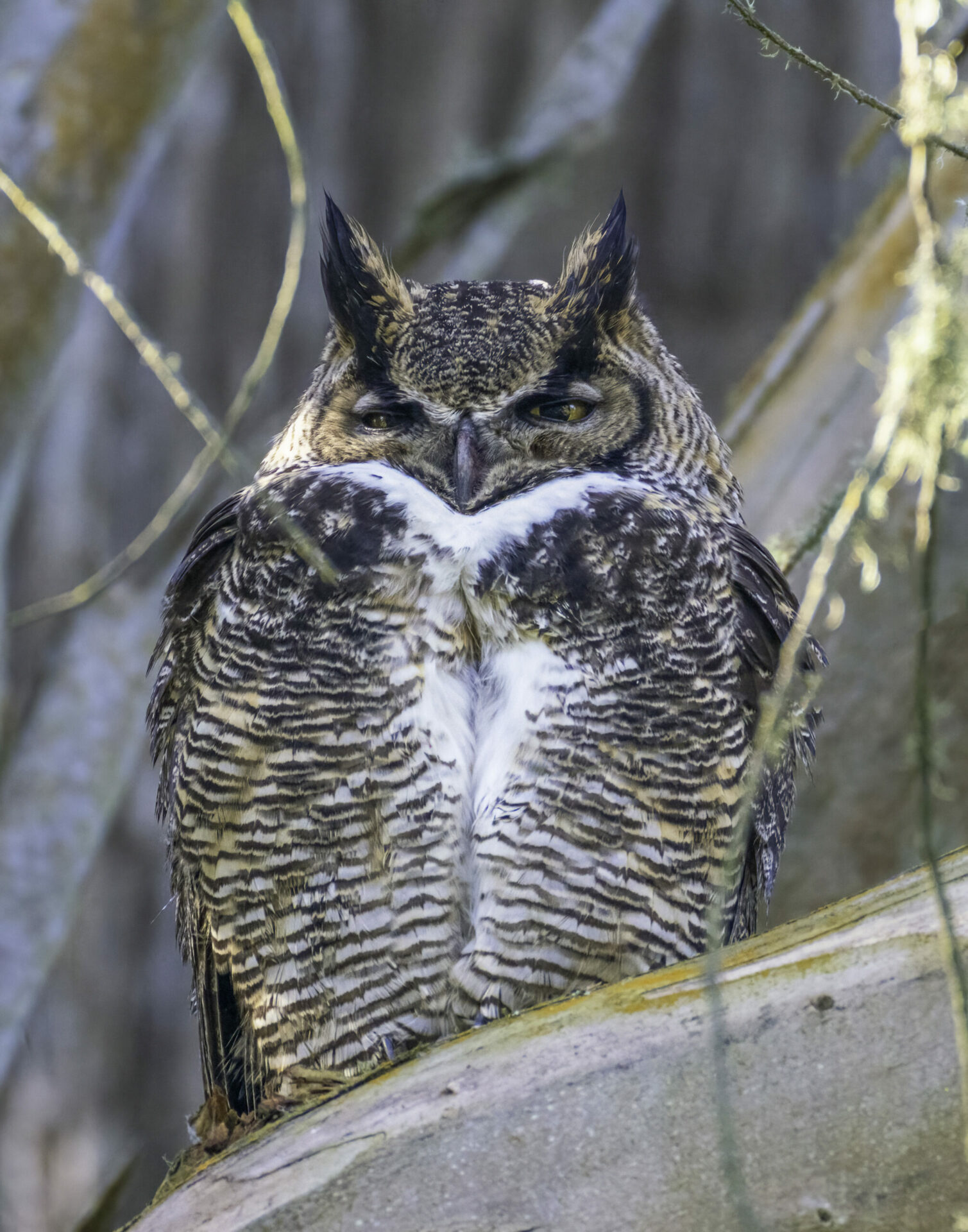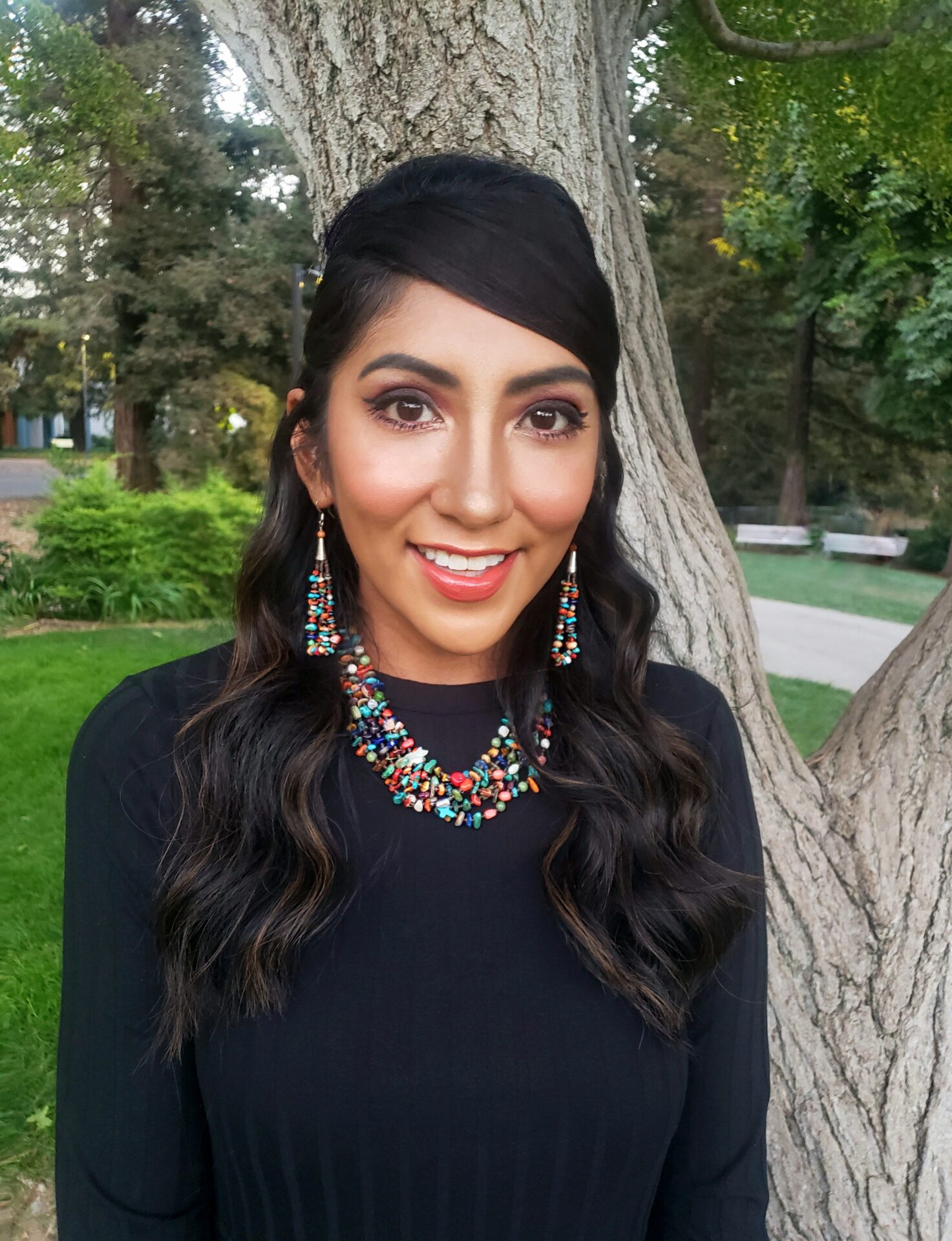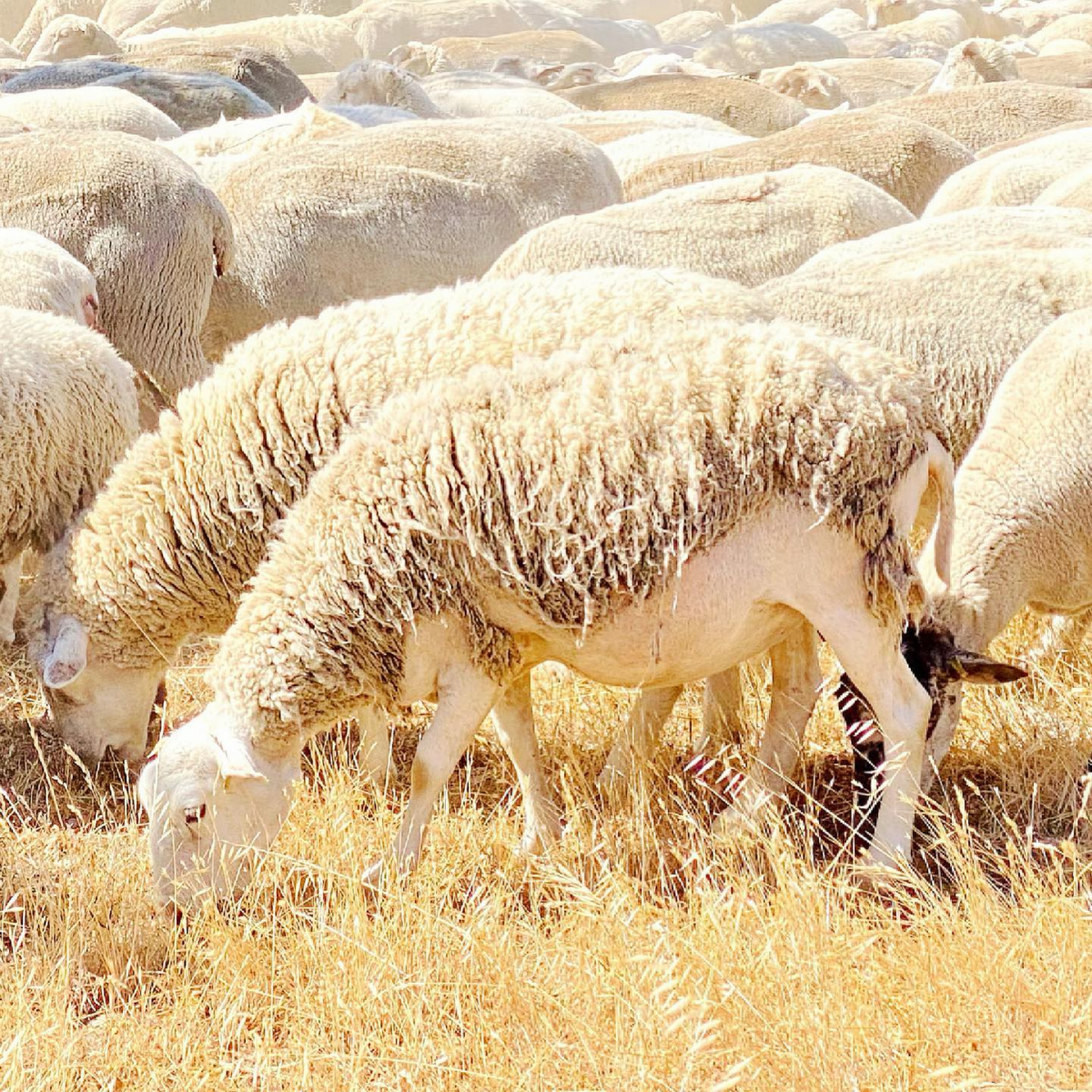Feathered Flames
Red-tailed hawk on wire. Photo: Bob Gunderson.
Among the more well-known causes of wildfire — lightning, volcanic activity, neglected cigarettes, gender reveal parties gone awry — there remains a less notorious culprit: electrocuted birds.
When birds settle on charged portions of the transmission lines or utility poles that span the skyline, they may be electrocuted, fall from the line, and ignite the vegetation and infrastructure below. And in regions with hot, arid climates, where dry grasses and shrubs provide the ideal fuel for flames, these sparks can result in wildfires.
“Birds frequently perch to rest or to hunt on utility poles because they are often the highest and most prominent point in the landscape,” explains Pacific Gas and Electric (PG&E) Spokesperson Deanna Contreras.
Larger-bodied birds — most often raptors like eagles, great horned owls, hawks, and turkey vultures — are most susceptible to electrocution due to their size, as they may come into contact with two transmission wires at once, forming an electrical circuit, or place undue weight on an energized piece of equipment.
Over 10 million avian mortalities occur due to electrocutions each year, with an estimated 44 cases resulting in wildfire in the United States between 2014 and 2018, according to researchers with the Wildlife Society Bulletin. Krysta Rogers, Senior Environmental Scientist for the California Department of Fish and Wildlife, notes that as of August 2022, “20 of the birds [she] received for postmortem examination had evidence of electrocution, or were suspected of being electrocuted.” Electrocutions accounted for about 3.6% of total deaths among the birds Rogers examined between 2015 and 2021, though it is difficult to determine whether fires resulted from these shocks.
Utility companies can take measures to prevent bird electrocutions, however. PG&E has adopted
Other Recent Posts
Slow Progress on Shade For California’s Hottest Desert Towns
Coachella Valley communities face record temperatures with little shade. Policy changes lag as local groups push for heat equity.
In Uncertain Times, the Port of Oakland Goes Electric
A $322M grant powers Oakland’s port electrification — cleaning air, cutting emissions, and investing in community justice.
Testing Adaptation Limits: Mariposa Trails, Marin Roads & San Francisco Greenspace
In KneeDeep’s new column, The Practice, we daylight how designers, engineers and planners are helping communities adapt to a changing climate.
ReaderBoard
Once a month we share reader announcements: jobs, events, reports, and more.
Boxes of Mud Could Tell a Hopeful Sediment Story
Scientists are testing whether dredged sediment placed in nearby shallows can help our wetlands keep pace with rising seas. Tiny tracers may reveal the answer.
“I Invite Everyone To Be a Scientist”
Plant tissue culture can help endangered species adapt to climate change. Amateur plant biologist Jasmine Neal’s community lab could make this tech more accessible.
How To Explain Extreme Weather Without the Fear Factor
Fear-based messaging about extreme weather can backfire. Here are some simple metaphors to explain climate change.
Live Near a Tiny Library? Join Our Citizen Marketing Campaign
KneeDeep asks readers to place paper zines in tiny street libraries to help us reach new folks.
Join KneeDeep Times for Lightning Talks with 8 Local Reporters at SF Climate Week
Lightning Talks with 8 Reporters for SF Climate Week
Staying Wise About Fire – 5 Years Post-CZU
As insurance companies pull out and wildfire seasons intensify, Santa Cruz County residents navigate the complexities of staying fire-ready.
Great-horned owl, another susceptible raptor. Photo: Bob Gunderson.
an Avian Protection Plan to advise best practices for bird health and partners with the U.S. Fish and Wildlife Service to address bird safety issues. According to Contreras, more than 28,000 of PG&E’s utility poles have been retrofitted with protective covers to prevent direct contact by birds, with the company aiming to retrofit 2,000 more poles each year. Many also have bird flight diverters that reflect in low-light conditions to help birds avoid collision with power lines.
In addition to preventive action on the part of utility companies, climate change mitigation and proper fire management remain crucial to disaster prevention. Though wildfires caused by bird electrocutions are less of a concern on the coasts, where air is cooler and wetter, any potential for fire in a drought-vulnerable California poses a severe threat. Snuffing out these risks means protecting ourselves, wildlife, and the birds soaring across the skyline.











